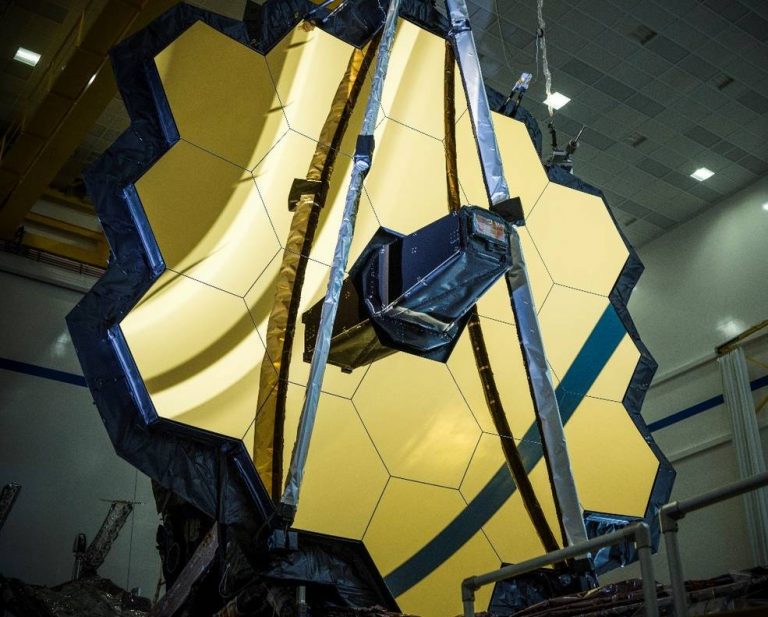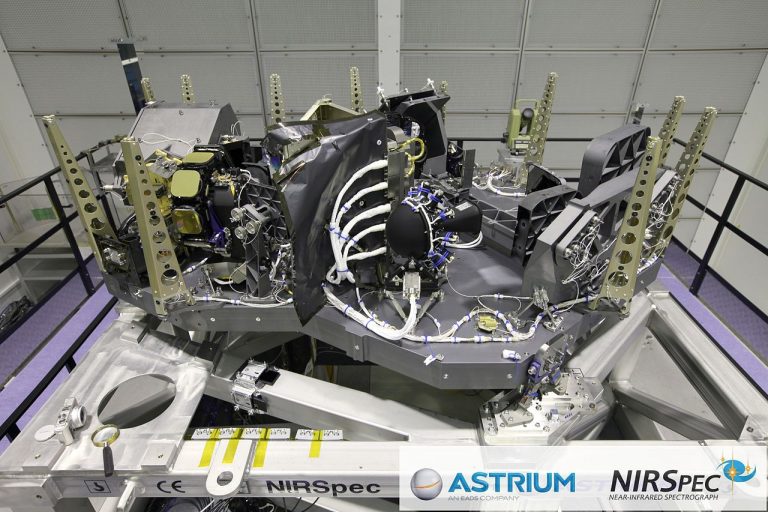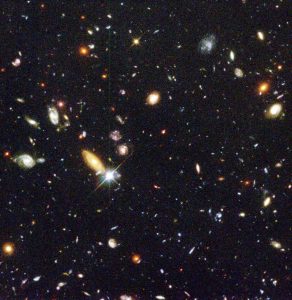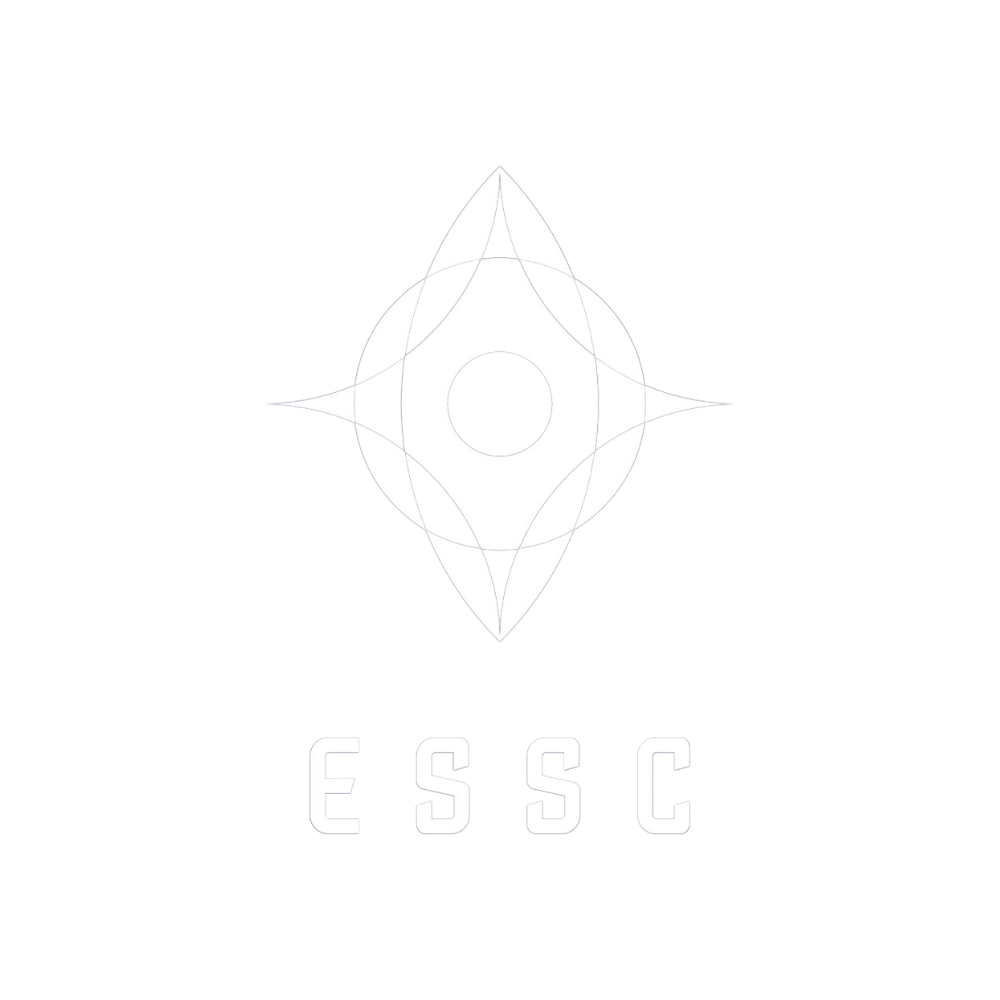New window to the early Universe and other worlds about to open
European contribution to the James Webb Space Telescope will help make inspiring discoveries.
By Mari Kolehmainen
Dec 07, 2021
After more than twenty years in the making, the James Webb Space Telescope is finally prepared for launch. Named after a NASA director during the Apollo era in the 1960s, the telescope will add to our knowledge of the early Universe, tell us more about how galaxies form and evolve, and look for signs of life outside our Solar System.
Often dubbed the ‘big brother’ of the Hubble Space Telescope, Webb is indeed big. Its segmented mirror is 6.5 metres in diameter, nearly three times bigger and 100 times more sensitive than Hubble. The large mirror will be able to collect almost six times more light than its predecessor but is so large that it must be folded to fit the launch rocket along with its tennis court-sized sunshield. Webb will also operate in a wider energy range extending beyond the visible light to infrared wavelengths, enabling it to see further into the past when the first stars and galaxies were born after the Big Bang.

EXCITING SCIENTIFIC DISCOVERIES
Expectations are high for the next-generation space telescope. Webb is designed for two very topical science goals: to study the cosmic origins of the early Universe, and to explore planets orbiting stars other than the Sun for the potential for life outside the Solar System.
Observing a distant galaxy today means looking at light that left the galaxy as many years ago as the light took to travel to us. Hence, the farther in distance we are able to see, the older the light we observe. Furthermore, as the light travels through the expanding Universe it stretches from visible light into infrared light. Webb’s infrared detectors will be especially sensitive to this light, which is why Webb is expected to give us an unprecedented view of the earliest stars and galaxies that started to form about 400 million years after the Big Bang.
In addition to shedding more light into our cosmic history, Webb is expected to perform the first detailed near-infrared study of an atmosphere of a so-called habitable-zone planet outside our Solar System. While thousands of these exoplanets have been identified up to date, we still know very little of their detailed characteristics and their possible ability to host life. The four instruments onboard Webb will, first of all, help scientists search for planets with atmospheres that are similar to Earth’s atmosphere. They will also enable us to look for signs of the key elements of life, such as oxygen, carbon dioxide, water, and complex organic molecules.
EUROPEAN CONTRIBUTION
Webb is an international collaboration led by NASA, in partnership with the European Space Agency (ESA) and the Canadian Space Agency. The near-infrared spectrograph NIRSpec onboard Webb, designed and built in Europe, is managed by the ESA Webb Project at the European Space Research and Technology Centre (ESTEC) in The Netherlands. Some of the key parts of the mid-infrared camera MIRI were also built in Europe before being combined with NASA-built detectors. These two instruments together will make observations of extended and complex fields filled with distant galaxies and dust-covered new-born stars to study their material composition and help us better understand the evolution of galaxies in our Universe.
European contribution to the project is therefore significant. In addition to supplying state-of-the-art instrumentation for the telescope, Europe oversees its eventual launch into space on board its flagship Ariane 5 space launch vehicle. Once Webb has reached its destination and is fully operational, Europe will also provide personnel to support telescope operation throughout the mission. These contributions guarantee European scientists a minimum share of 15% of the highly valuable observing time on the telescope.
HUBBLE’S LEGACY
European contribution to Webb’s predecessor, Hubble, also guaranteed European scientists the same minimum share of the available observing time. This share has often been significantly higher in the past through open competition, with nearly 800 European observing programmes being carried out in Hubble’s lifetime. To date, scientists from almost all ESA member states have had an opportunity to observe with Hubble. About 30% of all scientific publications based on Hubble data have a European author or co-author, highlighting the huge importance of Hubble to European astronomy.
ESA’s commitment to Hubble’s successor Webb guarantees a hugely important continuity for more European space science in the future. Furthermore, the European co-operation to develop technology for Webb’s MIRI instrument led to a completely new approach to managing such efforts between ESA and the European space industry and helped reform the way scientific instrumentation development is operated in Europe.
LAUNCH DATE IS NEAR
Ariane 5 rocket carrying Webb is currently scheduled to launch in late December 2021 from Europe’s Spaceport in French Guiana. The live broadcast of the launch will be available online on NASA TV for everyone to follow. After leaving our atmosphere, Webb will travel for about a month to reach its destination some 1.5 million kilometres away from Earth. During this time, the mirror, its sunshade, and solar panels are unfolded, and the instruments are cooled down to almost absolute zero to maximise their sensitivity.
The science from the first six months of observations and calibration won’t be available until summer 2022. However, with the scientific community waiting on the edge of their seats, we might be lucky enough to see some ‘first light’ images before then.

